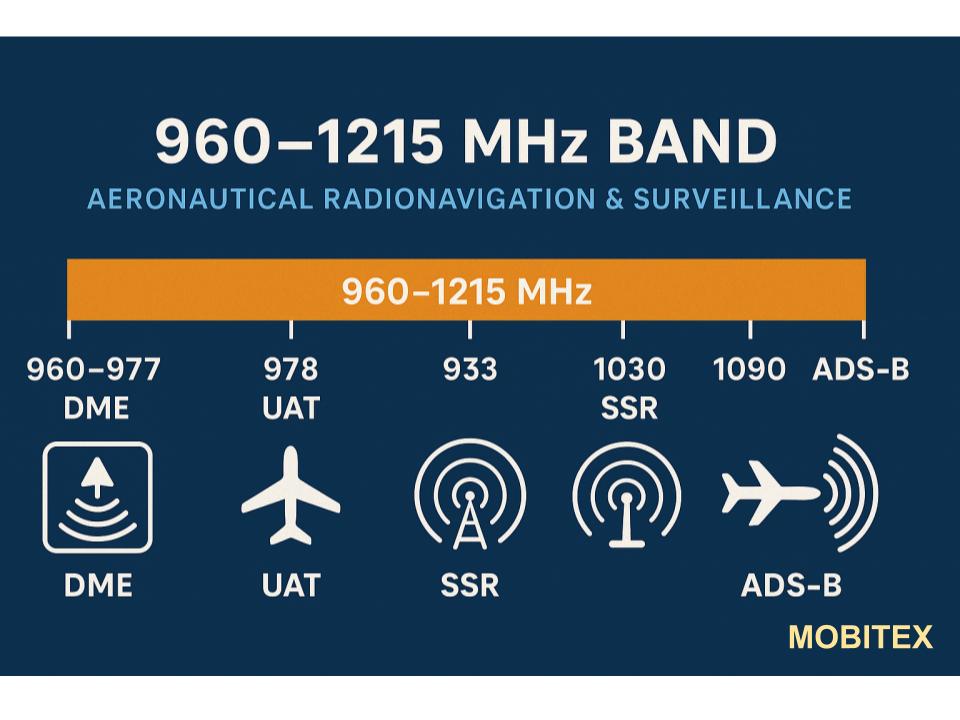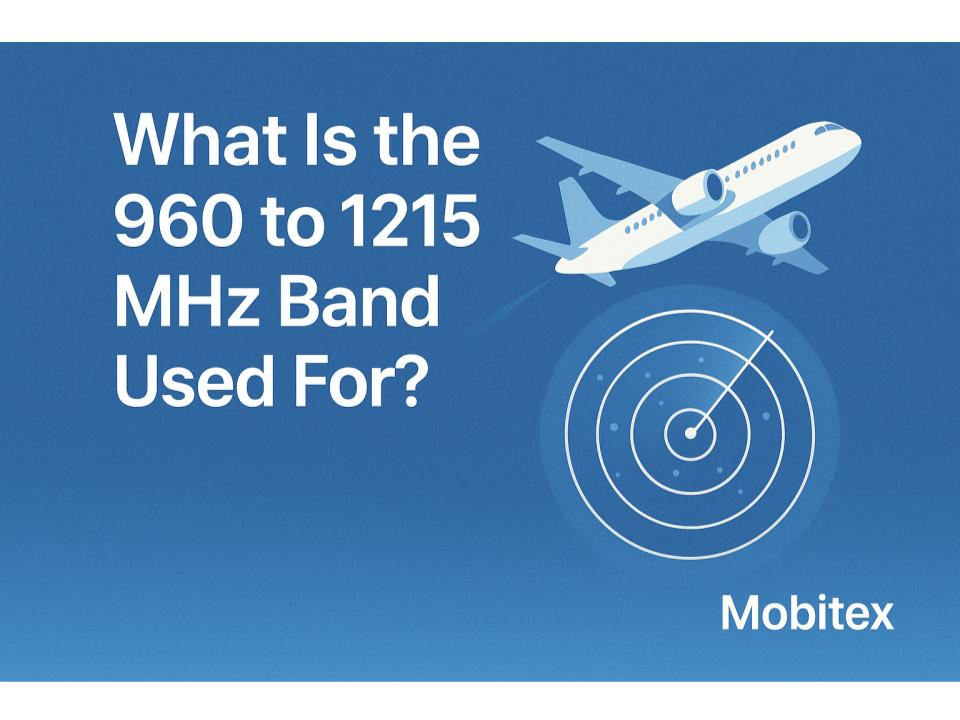The 960 MHz – 1215 MHz band is a globally coordinated portion of spectrum primarily reserved for aeronautical radionavigation and surveillance systems. It’s one of the most critical aviation safety bands in the world.
Here’s a detailed breakdown:
🛫 Primary Uses
1. Distance Measuring Equipment (DME)
- Used by aircraft to determine their distance from a ground-based transponder by measuring the time delay of radio pulses.
- Operates on paired frequencies within the 960–1215 MHz range.
- Provides continuous range updates to pilots and onboard avionics for navigation.
2. TACAN (Tactical Air Navigation System)
- A military system similar to DME, adding azimuth information for bearing.
- Also operates in this band and shares channels with DME (via pulse-coding techniques).
- Allows precise position fixing for military aircraft.

3. Secondary Surveillance Radar (SSR)
- Used for air traffic control radar beacons.
- Transmits interrogations (around 1030 MHz) and receives aircraft replies (at 1090 MHz).
- Enables air traffic controllers to identify aircraft and obtain altitude data.
4. ADS-B (Automatic Dependent Surveillance–Broadcast)
- Operates at 1090 MHz (Mode S Extended Squitter).
- Aircraft automatically broadcast their position, altitude, velocity, and ID to other aircraft and ground stations.
- Forms the foundation for modern global air traffic surveillance and collision avoidance systems.
5. UAT (Universal Access Transceiver)
- In some regions (especially the U.S.), a 978 MHz sub-band supports general aviation ADS-B broadcasts.
- Complements the 1090 MHz channel to reduce congestion.
🌍 Regional Allocations and Coordination
- ITU Allocation: Aeronautical Radionavigation / Aeronautical Mobile (R) Service (ARNS/AM(R)S).
- Regulatory Coordination: Managed internationally through ICAO, ITU, and regional aviation authorities (FAA, EASA, etc.).
- Global Harmonization: Extremely high — this is a protected safety-of-life band with worldwide interoperability requirements.
⚙️ Technical Characteristics
| Parameter | Typical Value / Notes |
|---|---|
| Frequency Range | 960 – 1215 MHz |
| Modulation Type | Pulse-pair (DME), Pulse-position (SSR/ADS-B), sometimes spread-spectrum |
| Channel Spacing | 1 MHz (DME/TACAN) |
| Propagation | Line-of-sight; air-to-air and air-to-ground |
| Power Levels | Up to tens of watts (airborne) and hundreds of watts (ground) |
| Coverage | Typically 200 – 300 nmi for DME/SSR; longer at high altitudes |
🚫 Secondary / Restricted Use
- The band is heavily protected; non-aviation systems are generally prohibited.
- Some experimental or test systems (like wideband telemetry or research radars) may use this band under strict coordination.
- No ISM or unlicensed usage is allowed in this range in any ITU region.
✅ In Summary
The 960 – 1215 MHz band is used almost exclusively for aviation navigation and surveillance systems, including DME, TACAN, SSR, ADS-B, and UAT.
It is one of the most safety-critical and globally harmonized spectrum blocks – essential for aircraft position, distance, and identification worldwide.
